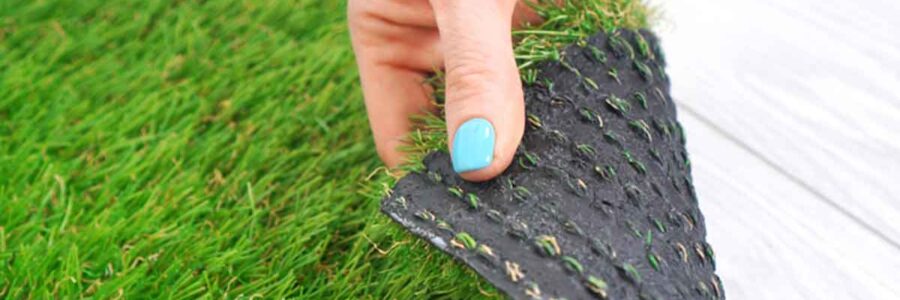In recent decades, synthetic lawns have become increasingly popular, enticing homeowners, municipalities, and institutions with promises of perpetual greenery and minimal maintenance. However, the apparent benefits of these plastic lawns, such as water savings and reduced upkeep, conceal deeper and more multifaceted costs. This article explores the hidden environmental, health, and economic consequences of favoring synthetic Lawns over natural grass.
Ecosystem Disruption
Loss of Biodiversity
Natural lawns teem with life, from soil microorganisms to hovering insects and visiting birds, fostering rich biodiversity. These ecosystems serve as vital shelters, food sources, and breeding grounds for numerous species. In contrast, synthetic lawns resemble barren deserts, providing neither sustenance nor habitat. Consequently, biodiversity suffers, affecting local ecosystems and creating broader environmental repercussions.[1]
Soil Health Deterioration
Beneath a healthy natural lawn lies a complex network of roots, fungi, and microbes that enhance soil aeration, water retention, and organic matter recycling. Synthetic lawns disrupt this natural process by acting as barriers, causing soil compaction that reduces water permeability. This, in turn, can lead to drainage problems, increasing the risk of flooding and runoff.[2-3]
Alteration in Microclimate
Natural grass contributes significantly to local temperature regulation through transpiration, releasing water into the atmosphere to provide cooling. This natural cooling effect helps mitigate urban heat island effects, where cities experience higher temperatures than their rural surroundings. In contrast, synthetic grass lacks this cooling capacity and can become excessively hot in direct sunlight, exacerbating local temperatures and creating discomfort and hazards for humans and pets.[2]
Toxicity of Plastic & Health Concerns
Chemical Composition
Synthetic turf primarily consists of plastics like polyethylene, polypropylene, and nylon. Over time, exposure to UV radiation and weather conditions can cause these materials to break down, releasing potentially harmful compounds. Additives in plastic production, including stabilizers, plasticizers, and flame retardants, may also leach into the environment, posing additional risks.[4]
Human Exposure
Human exposure to synthetic grass chemicals can occur through various pathways:
- Direct Skin Contact: Activities like playing or lying on synthetic turf can lead to skin abrasions, increasing the risk of chemical exposure.
- Inhalation: Particles and volatile organic compounds (VOCs) released from degrading turf can be inhaled, especially in high-friction areas like sports fields.
- Water Runoff: Toxins from the turf can mix with rainwater after rainfall, entering water systems.[4-5]
Regular exposure to these chemicals raises concerns about potential health risks, including respiratory issues, skin irritations, and long-term ailments.
Threat to Animals
Pets and wildlife are also at risk when exposed to synthetic grass chemicals. Ingesting particles or licking their paws after contact can lead to health issues for animals. Birds and smaller wildlife may accidentally ingest microplastics shed by synthetic turf, potentially causing obstructions and internal complications.
Environmental Impact of Production & Disposal
Carbon Footprint
Synthetic turf manufacturing is energy-intensive, involving raw material sourcing, processing, and transportation worldwide. The emissions generated during production and distribution often outweigh any environmental savings from reduced lawn watering or maintenance.
Non-Biodegradability
Synthetic lawns, primarily composed of plastics, can take hundreds to thousands of years to decompose. Discarded artificial lawns ultimately end up in landfills, exacerbating the plastic waste crisis. Microplastics shed over time can also enter oceans, posing threats to marine life and the food chain.[6]
Water Use Paradox
While synthetic lawns save water during their operational phase by eliminating the need for watering, the water consumption during their production phase is significant. Processing raw materials and cooling during manufacturing require vast amounts of water, challenging the water-saving argument made by synthetic turf proponents.[2]
Conclusion
Choosing between synthetic and natural lawns extends beyond personal aesthetics; it carries wide-ranging implications. While the allure of a low-maintenance green yard is undeniable, individuals and communities need to be well-informed about the broader impacts. Understanding the challenges associated with synthetic lawns empowers us to make conscious decisions, explore sustainable landscaping alternatives, and strive for a balance that benefits both individuals and the environment.
References:
- “Why Fake Grass Is Far from Green in Ways You Might Not Guess.” The Guardian, Guardian News and Media, 17 July 2022, theguardian.com/environment/2022/jul/17/why-fake-grass-is-far-from-green-in-ways-you-might-not-guess.
- “Why Are Artificial Lawns Bad for the Environment?” University of Plymouth, www.plymouth.ac.uk/discover/why-are-artificial-lawns-bad-for-the-environment.
- Simpson, Thomas J., and Robert A. Francis. “Artificial Lawns Exhibit Increased Runoff and Decreased Water Retention Compared to Living Lawns Following Controlled Rainfall Experiments.” Urban Forestry & Urban Greening, vol. 63, 2021, p. 127232, doi:10.1016/j.ufug.2021.127232.
- Dubin, Christina. “Synthetic Turf Is Hazardous.” Beyond Plastics – Working To End Single-Use Plastic Pollution, 3 July 2023, www.beyondplastics.org/fact-sheets/synthetic-turf.
- Mohammed, Atef M.F., et al. “Hazard Assessment Study on Organic Compounds and Heavy Metals from Using Artificial Turf.” Heliyon, vol. 9, no. 4, 2023, doi:10.1016/j.heliyon.2023.e14928.
- “To Turf or Not to Turf? Why Artificial Grass Is Wasteful.” North London Waste Authority, www.nlwa.gov.uk/blog/turf-or-not-turf-why-artificial-grass-wasteful.


